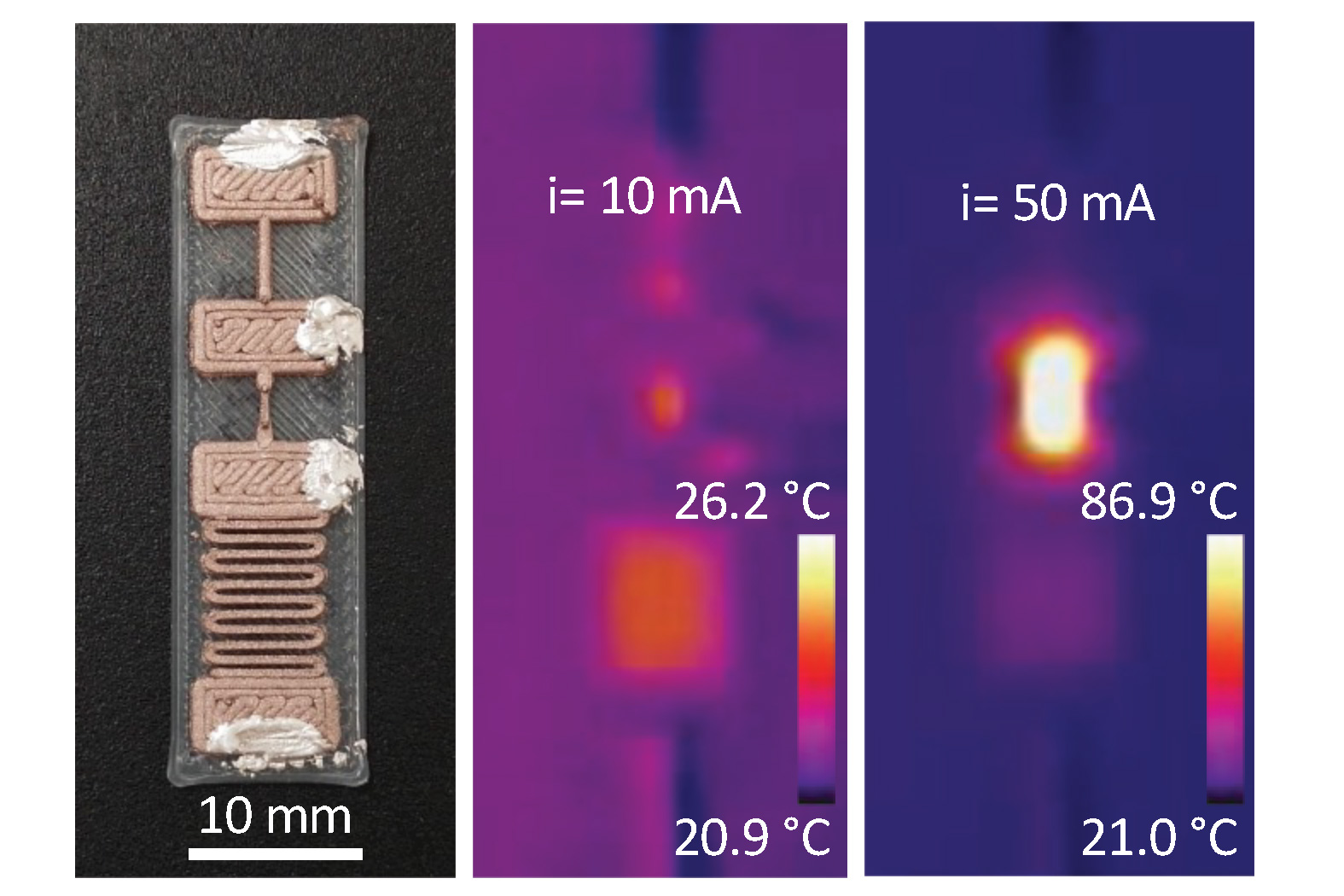A compelling portfolio is an important part of every designer’s promotional material. Potential clients and employers will use it to judge your skill level. It could be the difference in whether they contact you.
With that in mind, why not go all out? For example, employing video is a great way to grab a viewer’s attention. You can make something unique – a memorable experience that beats a plain old website.
Starting a video package from scratch can be tedious. But the right video template can help you get off to a roaring start. Start up your editing software, make a few customizations, and you’ve got an attractive presentation.
We’ve put together this collection of amazing portfolio video templates. They offer a professional look and are all easy to customize. You’ll find options for After Effects, DaVinci Resolve, Premiere Pro, and Final Cut Pro. Take your portfolio design to the next level!
Portfolio Templates for After Effects
Professional Portfolio Pack for After Effects
Use this portfolio template to add a clean and modern look to your presentation. It’s versatile and can be used to showcase different types of projects. Complete with snappy animations, you’ll be sure to keep viewers engaged.
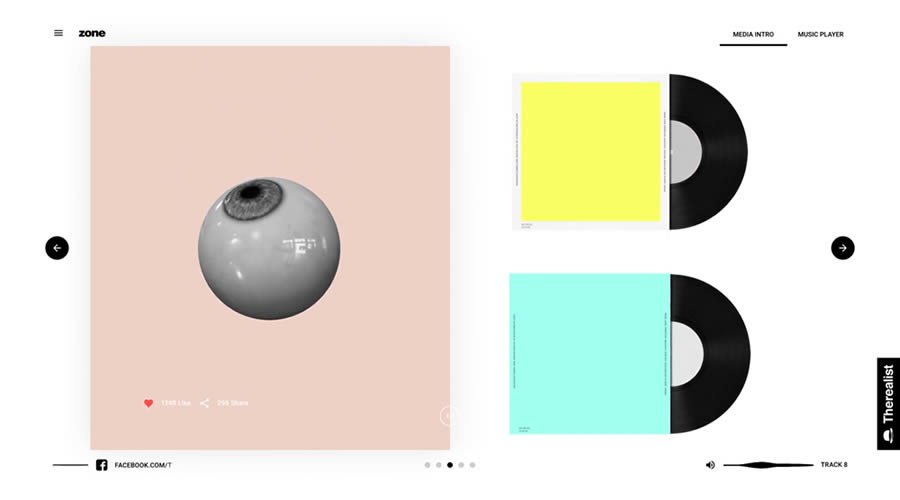
Modern Portfolio & Promo Template for After Effects
Add your photos and text to bring this video to life. There is space to include your skills, along with a short biography. It’s an easy way to introduce yourself to potential clients.

Black & White Animated Portfolio Template for After Effects
Want to make a strong first impression? This Ultra HD (3840×2160) black and white video template has everything you need. It features a modular structure for easier edits and includes a detailed tutorial. Combine fast-paced animation with classic looks.

Creative Portfolio Promo Template for After Effects
Bright and colorful, this video template will show off your resume in style. It includes several professional-grade animation effects and transitions. Customize the video by adding your photo and listing your skills.
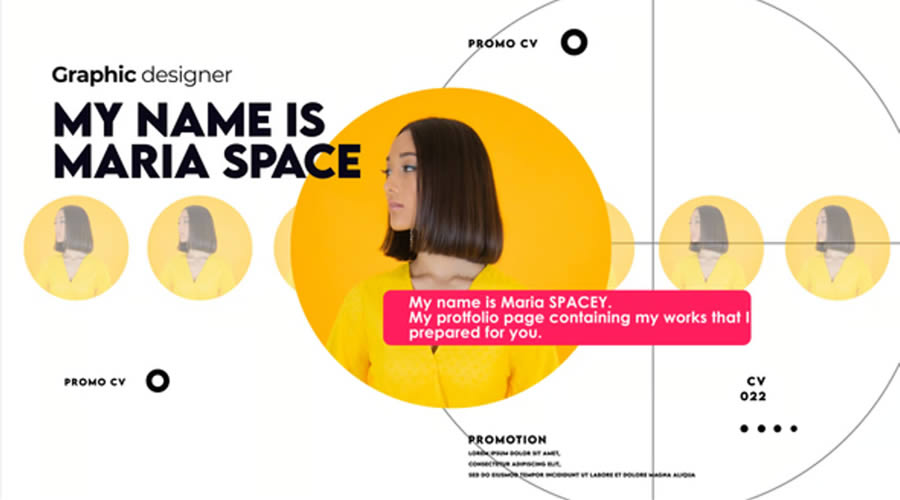
Professional Photography Portfolio Template for After Effects
Share your best images with this incredible photography portfolio template. There’s room for over 100 photos and over a dozen text placeholders. Put your photos into motion and wow your visitors.

Portfolio & Resume Video Template for After Effects
This template includes 10+ unique slides to show your skills and past projects. Use the included tutorial to learn how to swap colors, images, and more. You’ll have a video that represents your personal brand in no time.

Portfolio Templates for DaVinci Resolve
Colorful Portfolio Presentation Template for DaVinci Resolve
This template uses bold colors and precise movement to create a professional look. The special effects will keep viewers glued to the screen. It’s an excellent choice for those looking to make a statement with their portfolio.
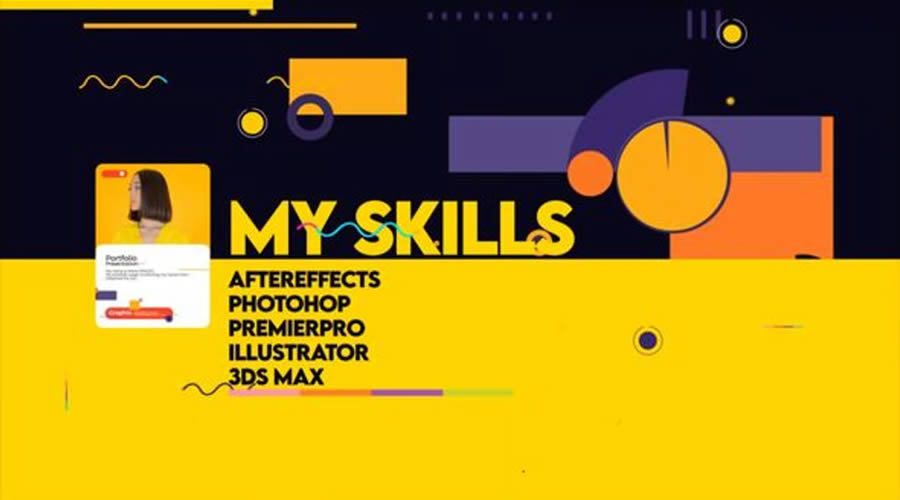
Creative Folds Portfolio Template for DaVinci Resolve
Geometric shapes play a huge role in this portfolio template. Each slide features ultra-smooth animation and attention-getting effects. There’s never a dull moment – making this presentation a hit with potential clients and employers.
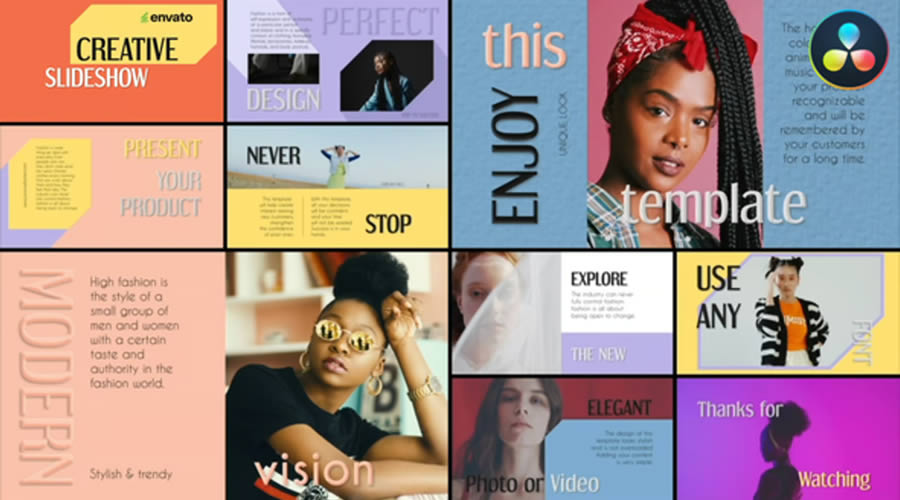
Portfolio Slides Video Template for DaVinci Resolve
Use this template to add a touch of fun and personality to your portfolio. It features hand-drawn elements and typography. The vibe is perfect for visual artists and illustrators who want to connect with viewers on a personal level.

Photography Portfolio Video Template for DaVinci
Attractive and to the point, this video template makes it easy to tell your story. You’ll find a clean, modern look and plenty of space to add custom text and images. The modular structure means an easier editing experience.
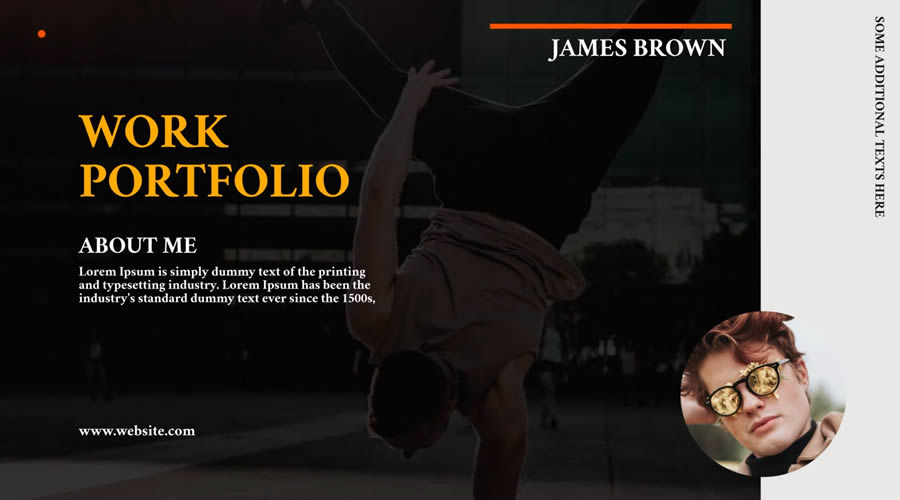
Portfolio Templates for Premiere Pro
Professional Photographer Portfolio Template for Premier Pro
Colorful and creative, you can use this template to create a top-notch portfolio presentation. List your skills, show off past projects, and captivate your audience. The aesthetic is unique and easy on the eyes.
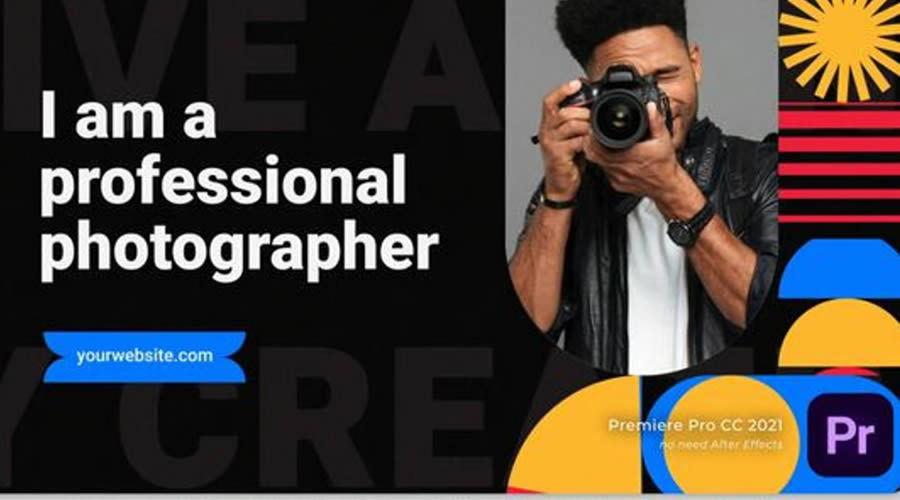
Elegant Fashion Portfolio Template for Premiere Pro
This template is aimed at fashion designers, photographers, and other creative professionals. Clever use of color and typography makes it easy for your work to take center stage. It’s a great choice for those looking to project a modern lifestyle.

Portfolio & Promo Template for Premiere Pro
Create a compelling video portfolio presentation with this template for Premiere Pro. It combines rounded shapes with beautifully synchronized motion for a contemporary look. Customize it with your images and text to boost your brand.
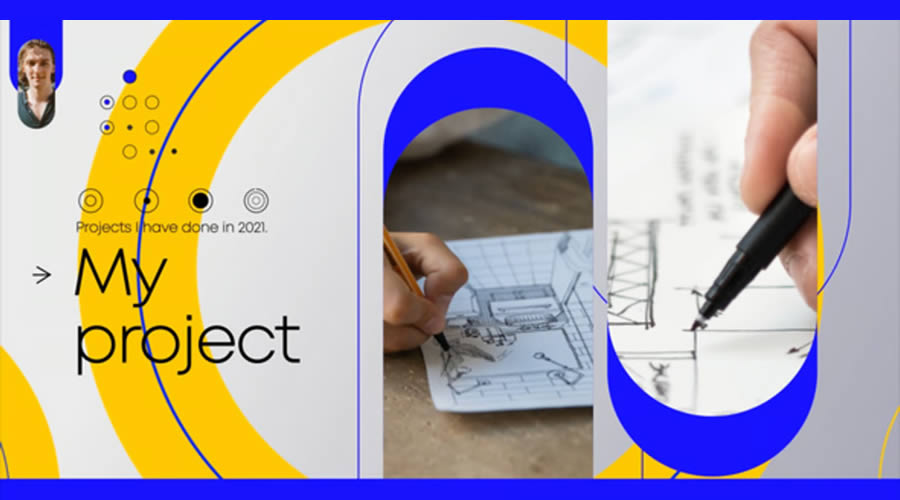
Various Portfolio Titles Template for Premiere Pro
Use this set of slick video slides to share your biography and past projects. The template features plenty of animation effects while allowing your content to stand out. Viewers will appreciate this simple and enticing presentation.
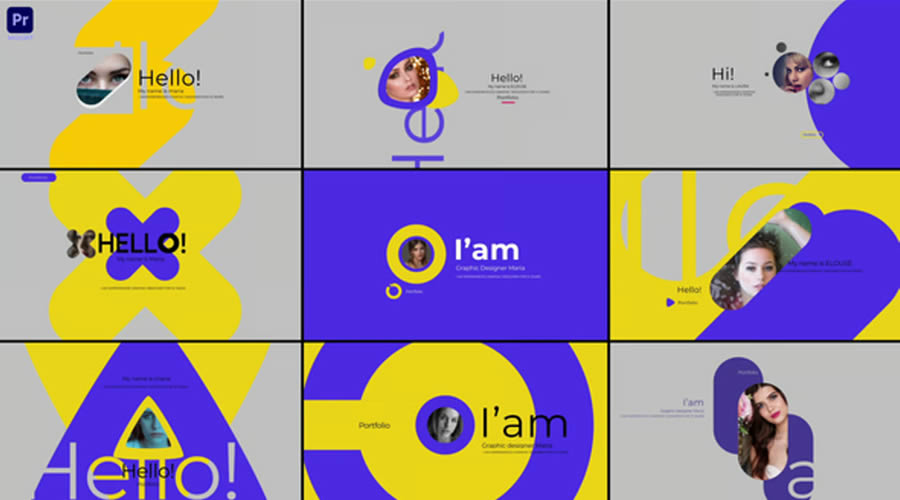
Photography Portfolio MOGRT for Premiere Pro
Make your photography the center of attention with this high-octane video template. You’ll find a minimalist approach to text with fast-paced photo collages. The result is an entertaining way to introduce your work to the world.
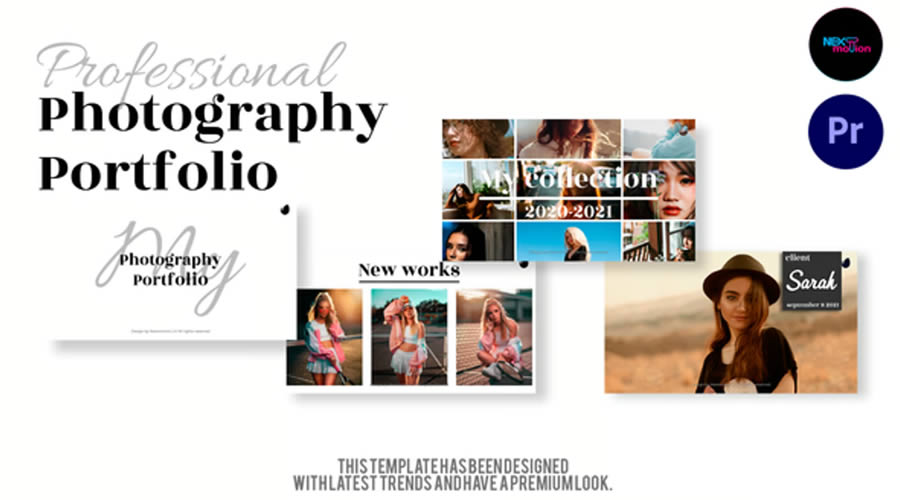
Resume & CV Presentation Template for Premiere Pro
Bold typography and smooth transitions make this template a winner. It’s the perfect fit for displaying your skills and work experience. There’s also room to feature your past projects as well.

Portfolio Templates for Final Cut Pro
Stylish Portfolio Slideshow Template for Final Cut Pro
Here’s a template that features 4k resolution and magical effects. Use it to showcase your photography, videos, or graphic design work. The muted colors and fun personality make it an excellent choice for artists.
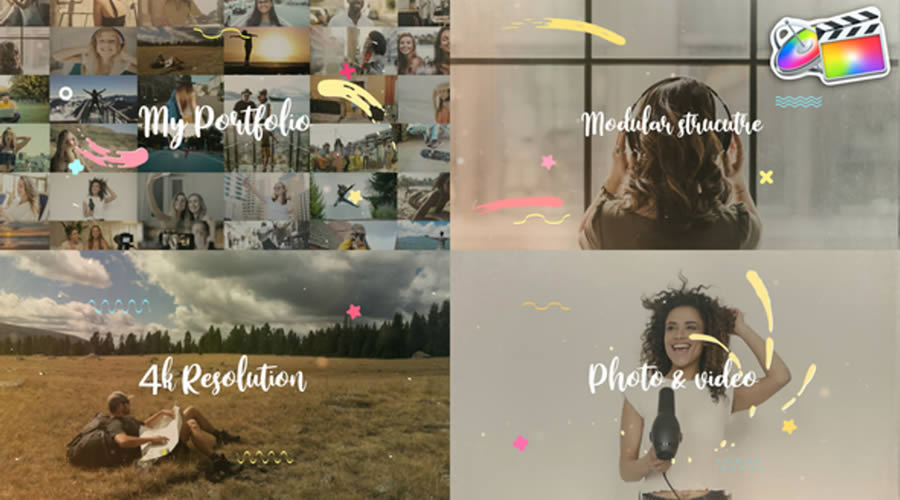
Urban Portfolio Slides Video Template for Final Cut Pro
Serious retro-futuristic vibes are coming from this video template. Dark backgrounds are mixed with neon text to make your message loud and clear. Add your best projects and take viewers back to the future.
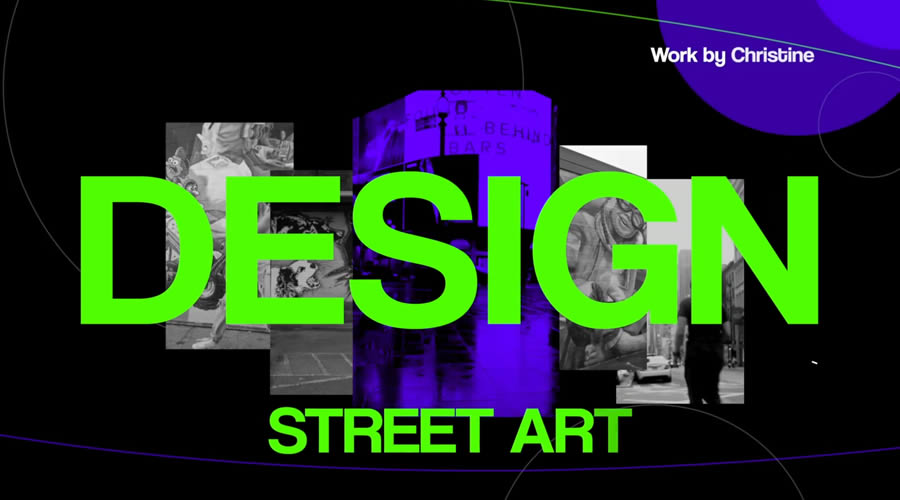
Animated Portfolio Lower Thirds for Final Cut Pro
Let your projects do the talking with this slick lower-thirds template. It offers outstanding typography and supports 4k video. Choose from seven animated lower-third presentations and customize the colors to match your brand.

Web Portfolio Video Template for Final Cut Pro
This template is perfect for web designers, with space to share your favorite work. It includes classic film and glitch effects that look amazing but won’t overwhelm viewers. Use it to bring your website portfolio to life.

Do More with Your Online Portfolio
The video templates above are an opportunity to do more with your portfolio. They add another dimension to your work and offer a different way to reach prospective clients. It’s something you can share and update as your career evolves.
Ready to take that next step? Start experimenting and see how video can improve your visibility.
Related Topics
Top



